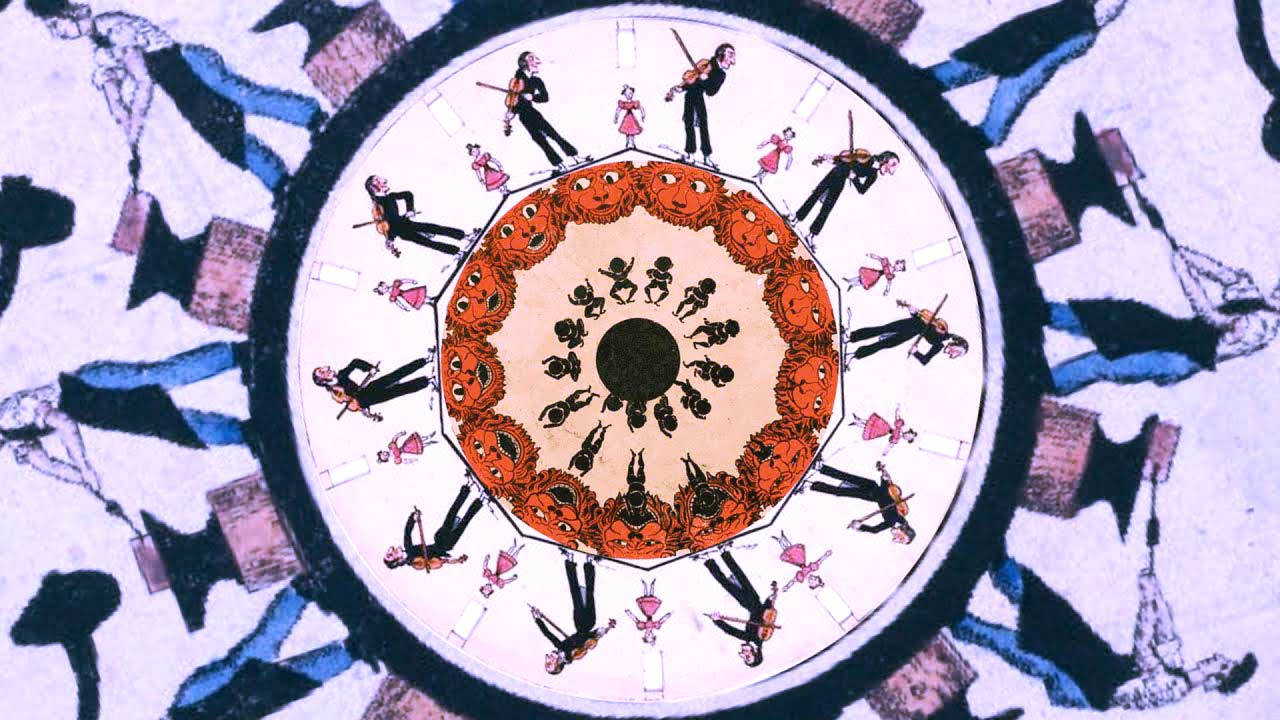A phenakistiscope is a device used in the 19th century to create the illusion of motion from a series of still images. It consists of a flat disc with a series of images or drawings arranged in a circular pattern around the center of the disc. The disc also has a series of equally spaced slits cut into the edge of the disc.
To use a phenakistiscope, you would hold the disc up to a mirror, and look through the slits while rotating the disc. As the disc rotates, the images would appear to move and create the illusion of animation.
The illusion works because of a phenomenon called persistence of vision. When an image is presented to the eye, it takes a short amount of time for the brain to process it. However, the image remains in the eye for a brief period, even after the image has disappeared. This means that if a series of images is presented quickly enough, the brain will blend them together to create the illusion of motion.
In the case of the phenakistiscope, the slits in the edge of the disc allow the eye to see each image in the series for a brief moment before it disappears behind the edge of the disc. As the disc continues to rotate, the eye sees the next image, and the brain blends the series of images together to create the illusion of motion.
Overall, the phenakistiscope is a fascinating example of how human perception can be manipulated to create amazing visual effects using simple mechanical devices.
The phenakistiscope is an early animation device that was invented in 1832 by Joseph Plateau, a Belgian physicist. It was one of the first tools that allowed people to experience the illusion of motion. At the time of its invention, Plateau had discovered that the human eye could retain an image for a fraction of a second after it disappeared. He named this phenomenon "persistence of vision."
The persistence of vision is a phenomenon where an afterimage persists in the human eye for a short time after the original image disappears. The time that an afterimage persists varies from person to person, but it usually lasts for around one-tenth of a second. This is why when we look at a moving object, we perceive it as a continuous motion, even though it's actually a series of still images.
The phenakistiscope is a device that takes advantage of this phenomenon. It is a spinning disc with a series of images arranged in a sequence. When the disc spins, the images appear to move, creating the illusion of motion. The device is based on the principle of the persistence of vision.
The phenakistiscope is made up of two main components: a disc and a viewing window. The disc is made of a lightweight material like cardboard or paper, and it has a series of images drawn on it. The images are arranged in a sequence around the edge of the disc. The viewing window is a small opening in the center of the disc.
To use the phenakistiscope, you hold the disc in front of your face and look through the viewing window. Then, you spin the disc using a handle or a string. As the disc spins, the images appear to move, creating the illusion of motion.
The images on the disc are drawn in a specific way to create the illusion of motion. The first image is drawn on the disc, and then a series of other images are drawn around it. Each subsequent image is drawn slightly different than the previous one, and this creates the illusion of motion when the disc spins.
The images on the phenakistiscope can be of anything, but they are typically simple drawings of people or animals. The animation can be quite simple, such as a person jumping up and down, or more complex, like a person running.
The phenakistiscope was a popular form of entertainment in the mid-1800s, and it was used to create animated cartoons and other forms of animation. It was also used to create educational tools, such as diagrams that showed how machines worked.
Today, the phenakistiscope is not used very often, but it is still an important part of animation history. It was one of the first tools that allowed people to experience the illusion of motion, and it paved the way for other forms of animation, such as the zoetrope and the flip book.
In conclusion, the phenakistiscope is an early animation device that is based on the principle of the persistence of vision. It consists of a spinning disc with a series of images that create the illusion of motion when the disc is spun. It was an important part of animation history and paved the way for other forms of animation. Although it is not used very often today, it is still an important part of our cultural heritage.
THANKYOU FOR READING



No comments:
Post a Comment